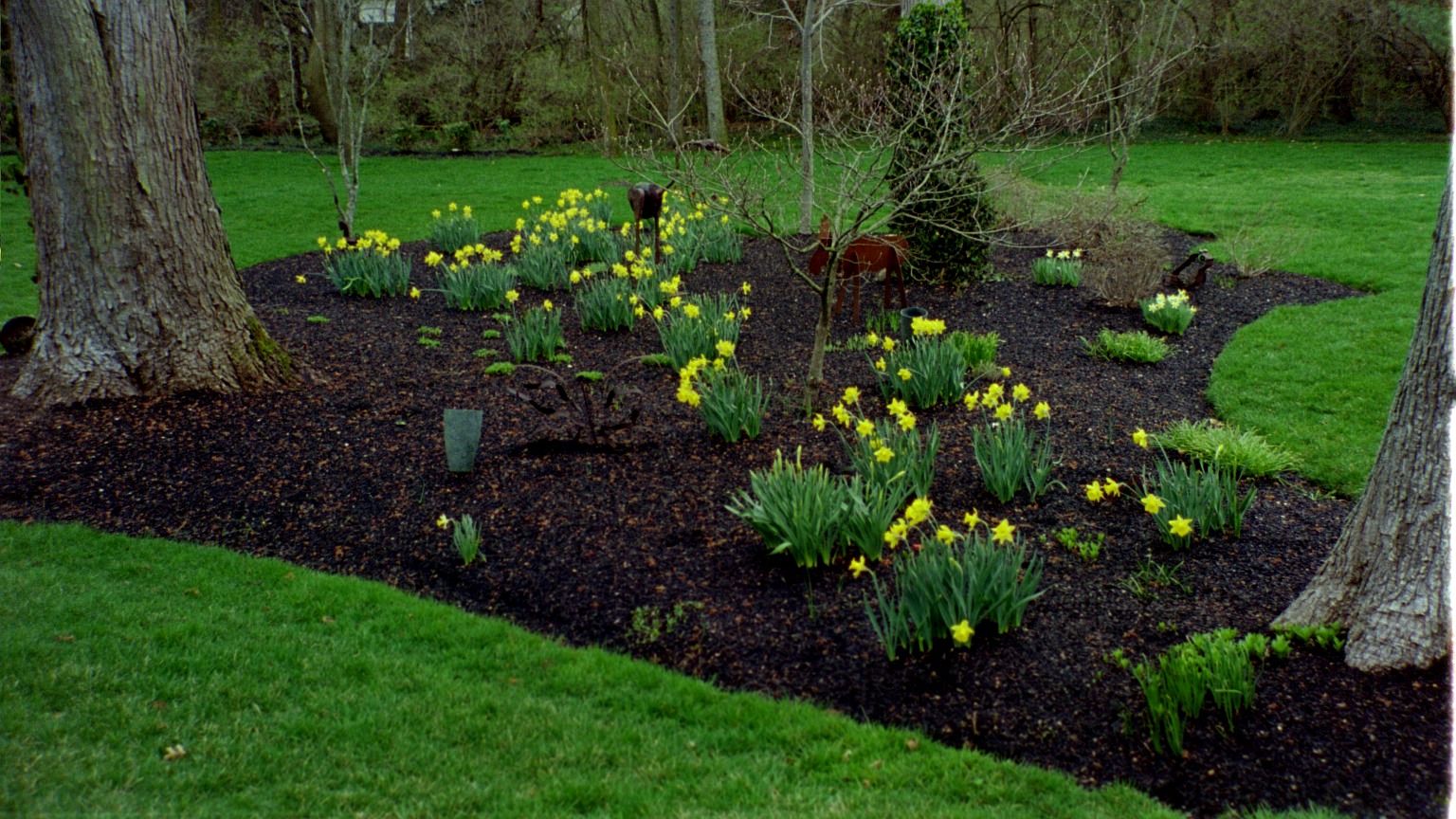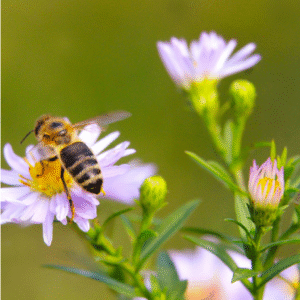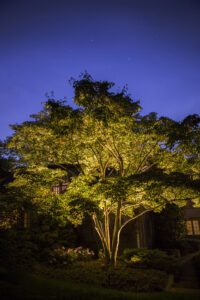By David Zimmerman
The garden season has officially started! For sure, you or your neighbors are getting ready to lay down a fresh layer of mulch on the garden beds. Almost everyone who has a landscape starts the season with this laborious task, but does anyone know why? In this article, I will dive deep into the mulch pile and demystify the science and proper practice of good mulching – as seemingly benign as that might sound!
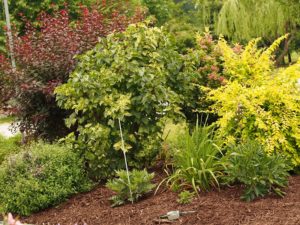
The natural color and appearance of wood mulch compliments the aesthetics of a cultivated garden space and provides the “canvas” upon which plant displays are exhibited. Yet the most beneficial aspects of mulch lie within the ecological relationships mulches have with the planet’s hydraulic and terrestrial cycles; benefits that lead to healthy and thriving plants. Take heed, however – proper mulching is a balancing act and the improper application of mulch can lead to a plethora of problems. The application of properly processed mulch accomplishes three main benefits; weed suppression, moisture retention, and erosion control.
Weed Suppression
Plants do not grow i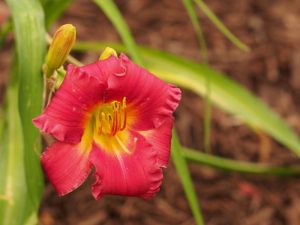 n mulch – they grow in soil. Plant roots require a certain ratio of minerals, moisture, air, and organic material within a medium in order to ionize nutrients. There are certain weed species that reproduce via vegetation or subterranean tubers, but most weeds propagate via wind or the droppings of birds. If these seeds land on mulch, they are not in the proper medium in which to propagate. They either expire or are moved by environmental forces elsewhere. If you see weeds in a fresh mulch bed, you are most likely dealing with a progeny of weed seeds already present in the soil beneath or you are in fact dealing with those pesky subterranean propagators like nutsedge or celandine. We refresh mulch every season for two reasons;
n mulch – they grow in soil. Plant roots require a certain ratio of minerals, moisture, air, and organic material within a medium in order to ionize nutrients. There are certain weed species that reproduce via vegetation or subterranean tubers, but most weeds propagate via wind or the droppings of birds. If these seeds land on mulch, they are not in the proper medium in which to propagate. They either expire or are moved by environmental forces elsewhere. If you see weeds in a fresh mulch bed, you are most likely dealing with a progeny of weed seeds already present in the soil beneath or you are in fact dealing with those pesky subterranean propagators like nutsedge or celandine. We refresh mulch every season for two reasons;
1.) Because mulch is an actively decomposing organic material. It is in the process of becoming soil so the older a mulch medium is, the better the environment within the mulch becomes for supporting the germination of weed seeds. 2.) Wind, rain, and leaf blowers throughout a season displace mulch. If the mulch layer is too thin, there is not enough of a barrier to suffocate weed seeds.
Moisture Retention
Water moves through soil for a long time after it rains. However, without mulch, your garden plants may 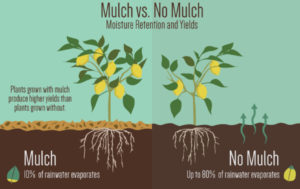 not feed as much as properly mulched plants would. Bare soil is quickly saturated by rainfall because the flow rate through the more dense particles of soil is far slower than the rate of water droplets falling to the ground. When the spaces between soil particles are filled with water, accumulated rainfall slides across the soil surface via gravity, hence creating the phenomenon of storm water runoff. Mulch is a coarse material relative to soil and thereby is rife with empty space between each chip. Each of those pockets produces a “braking” effect for the flow of water. Plants that are mulched receive water for a longer period of time and at a slower rate. Without going into too much detail on how plant roots ionize nutrients, I’ll just say that it is better for plants to be watered this way.
not feed as much as properly mulched plants would. Bare soil is quickly saturated by rainfall because the flow rate through the more dense particles of soil is far slower than the rate of water droplets falling to the ground. When the spaces between soil particles are filled with water, accumulated rainfall slides across the soil surface via gravity, hence creating the phenomenon of storm water runoff. Mulch is a coarse material relative to soil and thereby is rife with empty space between each chip. Each of those pockets produces a “braking” effect for the flow of water. Plants that are mulched receive water for a longer period of time and at a slower rate. Without going into too much detail on how plant roots ionize nutrients, I’ll just say that it is better for plants to be watered this way.
Erosion Control
The same reason mulch is beneficial for moisture retention is why it is also beneficial for Erosion Control. Small soil particles are easily displaced by the force of a raindrop falling from the stratosphere. We might not see it with our naked eye, but droplets that fracture upon the impact on bare soil carry small soil particles with them and break down the soil structure. This loosening coupled with soil saturation during heavy storms leads to soil being displaced, which neither looks good or is in any way beneficial to plants. Again, because of the greater grain size of mulch, individual woodchips can not be lifted solely by the impact of a rain drop and because of the rainfall “braking” effect within mulch, the soil structure is maintained. Granted, it is possible for mulch to become saturated in heavy storms, but cleaning mulch out of your lawn is much easier than getting soil out of your lawn.
Other Benefits
In addition to these three major benefits, there is even more to love about properly laid mulch.
To a degree – an ample medium of mulch will keep the grass out of beds. Keep in mind that cool season grasses like Fescue will very rarely win the fight of vegetating into properly established mulch beds. Warm season grasses like zoysia or bermuda grasses, however, are far more vigorous in their spreading habits. They will most definitely creep into flower beds eventually but at least a good mulching will impede it’s progress.
A thick layer of mulch sta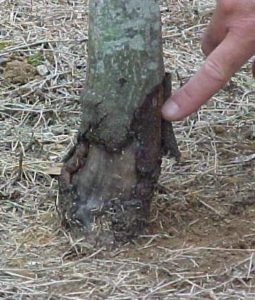 bilizes soil temperatures – especially during the DMV’s fluctuating fall and winter seasons. Nothing irritates plants more than drastic weather changes ( especially this year – as made evident in prematurely budding Prunus species ). Buds emerged from a spat of 60 degree February days are likely to dessicate the next day as a result of an overnight frost. Having a well insulated root system will make the plant more resilient in the face of quickly changing weather patterns. 3 inches of mulch around the full extent of the plant’s roots in conjunction with a thorough watering a day prior a major weather shift are the standard doctor’s orders when planning for our erratic “cool seasons”.
bilizes soil temperatures – especially during the DMV’s fluctuating fall and winter seasons. Nothing irritates plants more than drastic weather changes ( especially this year – as made evident in prematurely budding Prunus species ). Buds emerged from a spat of 60 degree February days are likely to dessicate the next day as a result of an overnight frost. Having a well insulated root system will make the plant more resilient in the face of quickly changing weather patterns. 3 inches of mulch around the full extent of the plant’s roots in conjunction with a thorough watering a day prior a major weather shift are the standard doctor’s orders when planning for our erratic “cool seasons”.
Finally, mulch can act as a cushion to prevent injury. Even the most skilled lawn crews will have trouble keeping grass trimmers from lashing the trunk of a tree set in the middle of turf. This sort of repetitive injury can spell death for an otherwise healthy tree. Lots of trees, especially oaks and maples, root close to the surface. This is the most sensitive part of the plant and a small nick or rip can be the cause for some serious problems down the road. Keep in mind that if a plant grows this way, it is its natural habit, and shouldn’t be covered very heavily ( the plant might “breathe” with these exposed parts, after all ). The “3-inch” rule does not apply when covering surface roots, but a 1-inch or so covering will provide an adequate shield against weathering.
Water Deeply Enough
Yes – mulch does help with water retention in soil, specifically during rainfall when the flow of water is constant for an extended period of time. However, when you are running your sprinklers or hand-watering your plants, take heed that enough water is reaching the soil around the roots. A good way of measuring if the soil is being nourished is by watering enough to notice pooling around the base of the plant. Once the pooling has drained, water until it pools a second time and then you have watered sufficiently.
I now conclude my article on mulch hoping that you have a new-found understanding and appreciation for the reasons there is mulch everywhere. Hopefully, you are now armed with the knowledge that will secure your plants’ health throughout the rest of the season and how to prevent some of the problems they might run into. This article, however, was only a basic overview of all things mulch. I didn’t talk about the different types of mulches, the controversy over dyes, chemical affectations during mulch decomposition, premium organic mulch versus cheap treated mulches, wood alcohols, fungal growths in mulch – the list goes on. If you are interested in learning even more about the mulch around you, then I have included some links to additional reading below.
And of course, if you are reading this article and the task of mulching your gardens seems that much more of a daunting endeavor, then we at Planted Earth would love to oblige in aiding you in your Spring Clean Up! Give us a call or shoot us an email regarding spring mulching, and one of our Maintenance Account Managers will begin negotiating your contract.
For now, I hope you enjoy your spring! May it be rife with the dazzling colors of spring flowers and the tell-tale scent of freshly laid mulch.

